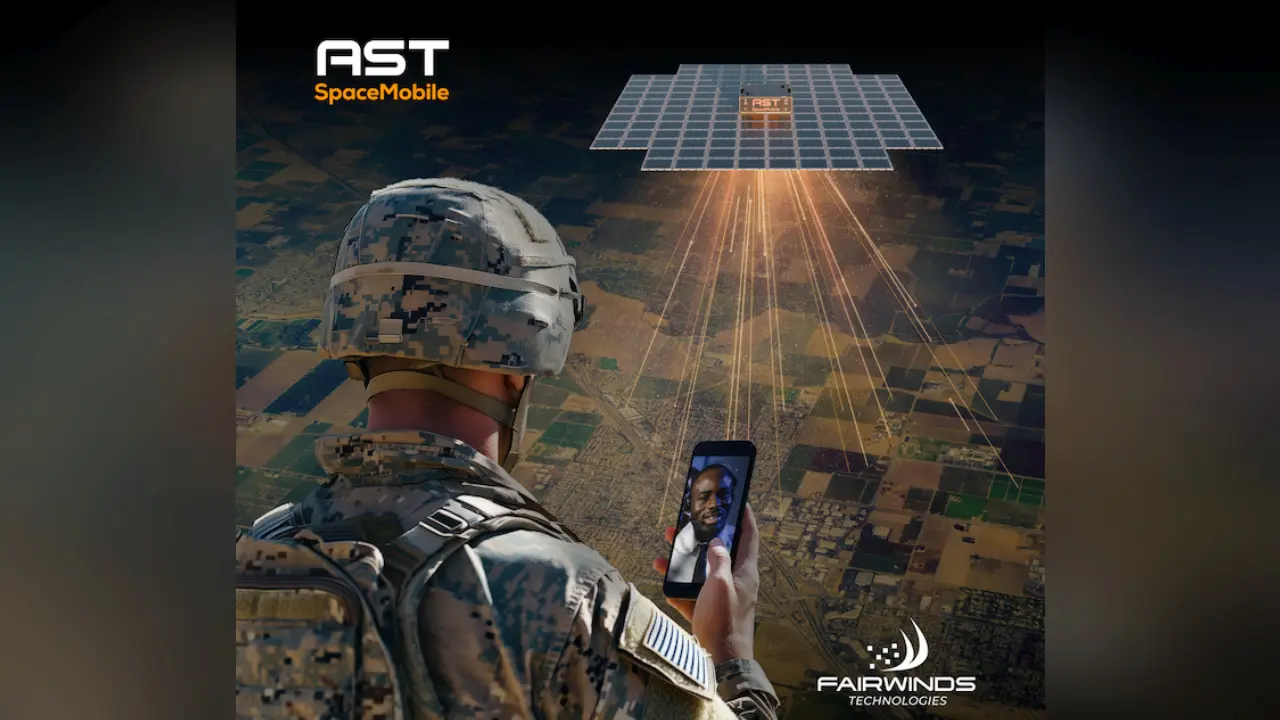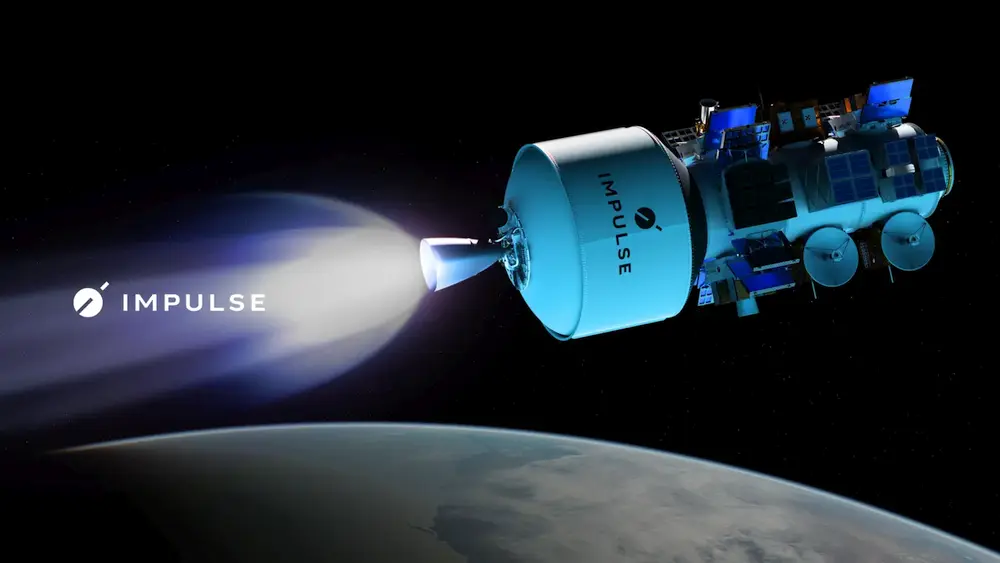Dec 15, 2014
Advanced VSAT Technology For High Stakes Industries
Oil and gas exploration and production (E&P) is a high stakes industry. There are multiple demands such as safety, security, exploring new areas for oil and increasing visibility between the rig and headquarters, all while keeping operational costs in check. Therefore, rig operators are constantly being pressured to make faster decisions and run operations more efficiently.
Expensive rental rate costs and operations are the norm across the oil and gas industry. Data from IHS Petrodata shows that 2013 rental rates for jackup rigs are averaging between $100,000 and $200,000, depending on the age of the rig and the depth it is capable of drilling. For semi-submersible rigs drilling inover 5,000 feet of water an average day rate of between $550,000 and $600,000 depending on location around the globe.
Rigs and drill sites are also transitioning to more remote locations to search new areas for oil. On the offshore side, the investment in deep water drilling has yielded new discoveries of crude oil and is providing increased growth throughout the industry. In onshore operations, there has been an increase in E&P tactics, such as fracking, that has pushed rigs into remote locations in developing territories. Pipeline operations are also growing, and energy companies need to meet an increased set of monitoring requirements such as pressure, temperature, flow rate and volume of gas produced.
As these trends continue to develop, oil and gas companies must rethink how to manage their operations. One way to improve is through utilizing satellite communications. This white paper explores the use of Direct’s advanced VSAT technology within the different segments of the energy industry. With satellite communications, rig operators will be able to make quick and more informed decisions, which will lower operating costs, raise productivity and provide safer working conditions for crew – regardless of location.
Off shore Exploration & Production
The term “offshore” in the energy industry generally refers to exploration or production activities beyond the coastline of a country, although there are a few exceptions on every continent. Inland waters, such as Lake Maracaibo in Venezuela, are often considered “offshore”.
Satellite communications is the de facto standard for communications with drilling rigs, drill ships and support vessels. And iDirect enjoys a commanding market share. The combination of iDirect’s satellite routers with stabilized satellite antennas have become the mainstay of modern offshore communications, replacing expensive L-band satellite systems, which are usage sensitive. iDirect’s MPLS compatibility allows rigs and vessels to be integrated seamlessly into a corporate network and treated as remote campuses.
Due to the remoteness and inherent danger, energy companies impose strict safety protocols for operations on offshore drilling rigs. If there is a communication outage, drilling operations must cease. At the aforementioned day rates for offshore rigs, downtime is extremely costly and redundant satellite systems become the norm as the water depth increases.
In addition to office automation applications and voice communications, E&P companies, offshore drillers, and oilfield service companies are demanding additional functionality to help drive down their cost of operations. One growing trend on offshore rigs and platforms is the integrated use of video in day-to-day operations. Video conferencing is certainly not new but IP-based video solutions have accelerated the pervasiveness of video cameras on rigs and platforms.
Collaboration is helping drive the boom in video transmissions. Rather than operating as steel islands with significant autonomy, more and more offshore facilities have dedicated production teams assigned to them back on the beach. There are multiple benefits to this approach. The first is speed. Team meetings can be conducted in minutes via a satellite link, eliminating time consuming and expensive helicopter trips back to land. Faster and better informed decisions can shave days off of the time it takes to drill a well, which translates into millions of dollars in savings.
Collaborative teams reduce the head count needed on drilling rigs and production platforms, thereby eliminating the cost of shuttling large numbers of employees back and forth by crew boat or helicopter. Fewer people onboard a rig also reduces the number of people who could potentially be in harm’s way should an accident occur.
When severe weather, such as a cyclone or hurricane, threatens offshore facilities, all workers must be evacuated. After the storm service companies are demanding additional functionality to help drive down their cost of operations. One growing trend on offshore rigs and platforms is the integrated use of video in day-to-day operations. Video conferencing is certainly not new but IP-based video solutions have accelerated the pervasiveness of video cameras on rigs and platforms.
Collaboration is helping drive the boom in video transmissions. Rather than operating as steel islands with significant autonomy, more and more offshore facilities have dedicated production teams assigned to them back on the beach. There are multiple benefits to this approach. The first is speed. Team meetings can be conducted in minutes via a satellite link, eliminating time consuming and expensive helicopter trips back to land. Faster and better informed decisions can shave days off of the time it takes to drill a well, which translates into millions of dollars in savings.
There is tense competition between energy companies for a finite number of helicopters and fixed wing aircraft. The lost opportunity cost of a week’s worth of production can cost tens of millions of dollars. Video transmitted over a satellite has also been successfully used in the Gulf of Mexico as a replacement for an aerial survey after a hurricane.
Streaming video has also become a mainstay for visual inspection of assets located on the sea floor. Remotely operated vehicles (ROV) can operate at depths up to 10,000 feet. In addition to tools and manipulator arms, which mimic human hands, ROVs can be outfitted with high definition cameras. An umbilical cord carries the video to the mothership operating on the surface, which then relays the video via satellite to the energy company’s corporate headquarters.
One of the lessons learned from the Macondo Well (Deepwater Horizon) blowout in the Gulf of Mexico was that the events leading up to the tragedy haven’t been easy to recreate, hampering the
investigators ability to determine the cause of the accident. As a result, federal regulators are developing a set of requirements that will force drilling rig operators to compile status data from different subsystems onboard on an ongoing basis. Although the final requirements haven’t been published, there is speculation in the industry that these data points will need to be streamed back to the beach, as well as stored on a “black box” recorder of some kind. It is unclear the number of data points, or the frequency of capture, but the amount of data transmitted from a rig will increase in the future.
The increasing use of video and advanced monitoring systems on offshore rigs and platforms is driving up the average consumption of bandwidth. Network planners must consider the affect of these increased demands on their satellite network. It is imperative to have a dynamic quality of service (QoS) system, which allows voice, video and data to peacefully coexist, especially on-demand video where usage isn’t linear.
Keith Johnson, President, Oil & Gas Division at Harris CapRock Communications, pointed to the increased usage of bandwidth in the offshore E&P market, saying, “There are several key applications which are driving bandwidth usage up. The first is the wide spread adoption of real time drilling systems. Measurement while drilling (MWD) data is streamed back to an energy company’s offices for evaluation. Energy companies and drillers are all developing expert systems which allow a team of senior drilling engineers and geologists to monitor multiple wells at the same time. With the real time data, the team can participate in decisions, such as drilling fluid rates and pressure changes, as well as monitoring the speed and direction of the bit. Real time drilling systems improve efficiency and shave time off the time it takes to drill a well.”
Video streaming and surveillance is on the rise offshore as well. Health, Safety, and Environmental (HSE) initiatives are a big driver in the use of video. A good example of this is telemedicine applications on rigs and platforms. Brazil’s operational standards for drilling rigs now require medical support personnel to be on the rig. A remote telemedicine solution is becoming a preferred solution to support the new requirement. Due to the deepwater nature of these rigs, satellite is the only feasible solution for telemedicine applications.”
“Last, there is a general push towards remote automation of rigs and platforms. Traditionally, rig hands have been used to monitor pressures and flow rates, and to make changes to settings. But now, those types of production activities are becoming automated. Many E&P organizations have undertaken automation initiatives to reduce the number of personnel in offshore environments with a focus on HSE,” Johnson concluded.
iDirect’s current release of its Evolution X7 remote ushers in a new level of throughput for customers with high bandwidth requirements, such as those in the offshore E&P market segment. The X7 remote is iDirect’s most powerful satellite modem to date, featuring new multi- core hardware and improved networking components, allowing the remote to achieve much higher inbound and outbound link speeds.
Onshore Exploration & Production
Companies engaged in E & P activities onshore utilize satellite communications for many of the same reasons as their offshore counterparts. While wireless carriers compete with satellite on a limited basis in certain countries, the footprints for cellular systems are generally limited to cities and the roads connecting them. Oil and
gas wells are typically drilled in remote areas, far beyond the nearest wireless coverage. Satellite technology provides ubiquitous coverage of landmasses and allows drillers to rapidly move from location to location with the assurance they will have broadband connectivity.
Office automation applications are required at drilling sites, as well as access to the Internet. Depending on the size of the rig, and the number of oilfield service companies supporting the rig, voice requirements range from a single voice line to 10 or more concurrent voice calls. Three-way calling from rig phones require two talk paths per phone, which increases the total number of talk paths per rig. iDirect’s voice prioritization system allows multiple voice connection to be made at the same time, with voice packets receiving prioritization over other data packets.
In Canada and the United States, satellite service providers must provide 911 support on all voice lines. While 911 support is adjunct to a satellite service provider’s core service, an effective packet prioritization scheme is a critical component if 911 services are to be effective Much like offshore applications, land-based drillers are integrating the use of video systems into their day-to-day activities. Access control applications have seen the greatest uptake but other applications, such as visual safety systems and triage medical systems are being investigated. One interesting example is an integrated video camera and gate system to control access to a drilling site. The video camera and intercom system eliminates the need and expense of a traditional gate guard.
RigNet acquired LandTel, the largest provider of satellite services to land- based drilling rigs in the United States, in 2006 and the company provides networking services to both offshore and onshore E&P companies. Morten Hansen, Vice President Business Services, noted several trends
in onshore E&P. “We are seeing traditional offshore producers pushing into the onshore market. As they do, they are looking to deploy a single solution across their fleet of drilling rigs, just as they do offshore. They want to ensure that all of their applications operate the same on every rig.
This standardization not only improves performance, it also minimizes the amount of troubleshooting required.” Hansen also commented on the increasing amount of data transmitted from land-based rigs, saying, “Just about every application on a rig has increased in size and the amount of data sent from a rig back to headquarters has increased as well. This has resulted in larger data circuits.”
“Video conferencing on terrestrial rigs will become common in the very near future. As such, being able to add capacity dynamically is extremely important. Having a contention scheme in your satellite network that can actively manage multiple data streams on a satellite link is critical for the successful implementation of video surveillance and video conferencing,” Morten concluded.
SCADA – Pipeline and Electronic Flow Measurement
SCADA (Supervisor Control and Data Acquisition) systems collects pressure, temperature and flow rate data from remote computing devices, called Remote Terminal Units (RTU), via telecommunications. If something must be changed in the pipeline, the host computer sends out control commands to the RTU, which interconnects with pumps, compressors, and valves.
SCADA systems are used worldwide to control pipelines. SCADA systems differ from Distributed Control Systems, which are used inside refineries and other industrial facilities. DCS systems utilize Programmable Logic Controllers (PLC) instead of RTUs, and the PLCs are hardwired to the host computer instead of using telecommunication links. Electronic Flow Measurement (EFM) systems are similar to SCADA systems but primarily collect data from natural gas or oil wells and have a limited ability to send out control commands.
All three types of systems are used extensively in the energy industry and have similarities. The term SCADA is used collectively in this white paper for all of these monitor and control applications. Pipelines can stretch several thousand miles and are controlled from a single host computer. As such, pipelines require constant communications between the host computer and RTUs. The time it takes to collect a new set of data from all RTUs is known as the scan rate.
Another important measure is response time, which is the amount of time it takes for the host to query the RTU and receive a response. Natural gas will compress and response times, which can range from seconds to minutes, aren’t as stringent as those required by liquid pipelines. Liquid pipelines typically transport crude oil, refined products, and liquefied gasses. Since a liquid won’t compress, a sudden spike in pressure can burst the steel pipe, thereby interrupting operations and causing a spill, which must be remediated. To keep close tabs on the contents of the pipeline, liquid pipelines have much shorter response times than natural gas pipelines.
The use of video has been found to be complimentary to traditional sensor networks and its adoption is growing at a rapid rate within SCADA networks. Video surveillance cannot only be used for traditional security purposes but also provides a “look around” of the site to determine if everything is safe after an alarm is triggered in the SCADA system.
The price of IP cameras has dropped dramatically but the cost of dedicating bandwidth to individual RTU sites is still prohibitive. iDirect’s packet prioritization scheme allows multiple RTU sites to share a common video channel, or channels, thereby significantly lowering the cost of providing on-demand video.
iDirect’s advanced satellite architecture is well suited for SCADA applications. iDirect’s Evolution X1 Router is a cost effective solution that allows SCADA users to meet their current bandwidth needs, with the flexibility of scaling up the bandwidth to one or all of their RTU locations in the future.
Pipeline right-of-ways are primarily chosen for geographic reasons and RTUs are often located in remote locations. Pipeline companies must lease or purchase land for small buildings to house their RTUs and telecommunication equipment. iDirect’s new Evolution X1 Outdoor Router is designed for outdoor use and it comes with an IP67 weatherproof case that can be mounted on a simple pipe mount. If an RTU in a weatherproof case can be utilized, the building, and the foundation it sits on, can be eliminated – a significant saving.
Commercial electrical power is often non-existent and solar arrays or thermoelectric generators must used to generate power for the VSAT and RTU. To minimize the amount of power required at the remote site, electronics that are rugged enough to withstand a non-air-conditioned or heated environment are preferred.
Field automation involves the installation of an entire field of oil or natural gas wells with small flow computers, which are then polled to see how much oil or gas, was produced over a specified period. A field may include anywhere from a handful to hundreds of wells in a geographic area.
Point-to-multipoint radio systems dominate field automation projects because they can be capitalized over a long period, there are no monthly recurring costs for bandwidth and radios can be powered with a very small solar panel. While radio systems are the accepted standard for field automation projects, there is a place in many field automation systems for VSATs.
Point-to-multipoint radio systems utilize a centrally located master radio which polls the slave radios to inquire if they have data to send. Different radio frequencies are available but many require line of sight. The higher the antenna of the master radio the greater the master radio’s range.
Once data has been collected from all the slaves, the master radio then sends it to the host computer, which is often located at a different location. VSATs are an ideal option for backhauling the aggregated data to the central computer. Large pipeline companies may collect data from tens of thousands of wells and they operate large numbers of independent radio networks to cover all of the wells. Having a common backhaul technologyis advantageous. Satellite technology provides predictable and stable pricing, regardless of location, for the backhaul circuit; allows the pipeline company to deal with a single vendor for all backhaul connections and the solution is scalable should the size of the backhaul circuit need to be increased.
Hotspots have become quite popular in remote oilfields, allowing employees to drive up to a well site and log onto the Internet to access email and company documents. The increasing number of hotspots at SCADA and EFM sites are pushing the demand for bandwidth up. Historically, the scalability of a communications link in a SCADA system wasn’t a high priority as low-speed modems and transmissions of hundred of bytes of data were the order of the day. Deployments of hot spots and the increasing use of video in the field have changed that paradigm.
While drilling rigs, platforms and producing oil and natural wells get most of themind share when people think about the energy industry, there are tens of thousands of small offices dotting rural settings, which are used to house field support personnel. Many of these locations have limited access to modern telephony and satellite technology can provide the needed communications to improve their connectivity. Rarely do these remote sites have the benefit of diversely routed terrestrial connections to different central offices as do offices in cities enjoy. Network down time idles everyone in an office and lost productivity is a thief. Leveraging iDirect’s bandwidth management system allows satellite service providers to offer cost effective business continuity solutions to small offices that ensure operations continue, even if the primary telecom connection is down.
Kevin Franciotti, the VP Global Operations at ITC Global explains some of the distinct needs that their users require, stating, “In high priority applications, customers need to know if a modem is active and if the circuit is active. In satellite networks which use slotted aloha, the hub cannot tell me whether the modem is in or out of the network. In lower level monitoring applications this isn’t important, but in higher end SCADA applications, such as burner control solutions, it is critical to know if the modem is up and running. You need to provide the customer some assurance that the satellite link is viable.”
Link verification is an important aspect of communications, which has a negative connotation with satellite communications. Franciotti continued, stating, “Without the verification of link viability, companies which operate SCADA networks could never be 100% confident that a state change occurred after a command was issued. Electric utilities are good examples of end users that require positive link verification. iDirect’s system architecture opens the door to higher end SCADA solutions and allows iDirect partners to sell services to companies that previously wouldn’t consider a VSAT solution.”
Conclusion
The Energy Industry has changed significantly over the last few decades. Parochial and regional concerns have blossomed into global conglomerates. Robotics and supercomputers are as common as producing hydrocarbons from a subsea well in 10,000 feet of water. Sensors and video cameras have become pervasive in all facets of the industry. The Energy Industry is truly global in reach and decisions, which used to take weeks, can now be made in hours. iDirect’s advanced satellite technology has played a key role in the Energy Industry initiatives and will continue to play a leadership role in the future.





